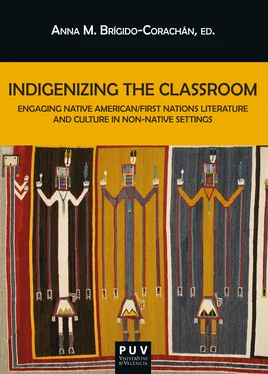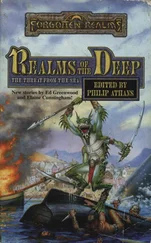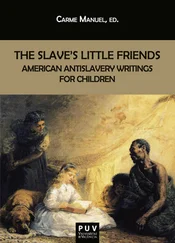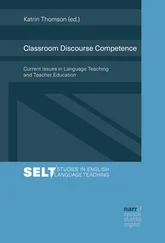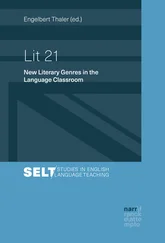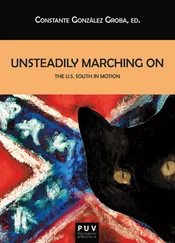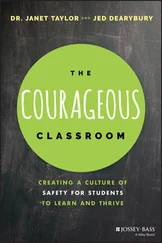2 See his classic study of Western Apache place names and stories, Wisdom Sits in Places (1996).
3Early 20 thcentury linguists like Edward Sapir focuses on geography and “linguistic border lands” (200), but recent scholarship suggests that the specific elements of an environment might actually play a role in language formation. See Everett for research that shows how higher elevations have effected phonetics in some languages.
4 “Native Languages and Language Families.” In Languages , Vol. 17 of the Handbook of North American Indians (Washington, DC: Smithsonian Institution, 1996).
5 The southeastern tribes that were removed to present-day Oklahoma include the Choctaw, Cherokee, Chickasaw, Seminole, Muskogee (Creek). They were joined by tribal members from the Northeast nations of the Shawnee, Ottawa, Pottawatomi, Sauk and Meskwaki (Fox), Lenape, Kickapoo, Miami, and the Senecas.
6 For a brief description of O’odham syntax and grammar, see Zepeda’s Papago Grammar.
7 The Library of Congress Subject Headings under which this book is catalogued in libraries call it a “biography” and “ethnography.”
8 Greg Sarris has argued that much indigenous verbal art is in fact directed towards underscoring its own “orality and interpersonal and intercultural discourse” (41). Thus Silko’s use of diacritics in this passage is intended to remind the reader of the collaborative nature of storytelling and the interpersonal and intercultural elements of the story that are embodied in the storyteller’s gloss on her subject.
9 The work of Dell Hymes is foundational to this kind of interpretation. Hymes defines “ethnopoetics” as “discourse organized in lines,” but this concept of the poetic line is culturally determined by deeper structures than mere breath or pauses. Hymes promoted the idea that indigenous verbal arts relied on “initial [linguistic] elements and associated discourse features” (341). These, in turn, can be inferred even in ethnographic transcriptions that did not originally recognize them. Hymes’ work influenced a generation of Native poets like Leslie Silko, who attempted to write in English what they perceived to be the sense of line in their own verbal arts traditions.
Addressing Matters of Concern in Native American Literatures: Place Matters
Chris LaLonde
SUNY Oswego
Living History
Walking into Pinehurst, sunburned, smelling of fish,
Big Indian man paying for some gas and a six pack,
Looking at me hard.
Dreamer, I think. Too old for me.
Heads right toward me.
“Jeez,” he says, “You look just like your mom-
You must be Marlene’s girl.”
Pinches my arm, but I guess it’s yours he touches.
Hell, wasn’t even looking at me.
Wonder if I’m what they call living history?
Kimberly Blaeser, “Living History”
Odd though it may seem, a US college or university can be, often is, a foreign context for the teaching of Native American literatures. That is to say, most of the students in most institutions of higher education without a significant Native student population and/or proximity to Native communities will be both non-Native and at best little aware of both the literatures being taught and the Native histories, cultures, and worldviews informing and grounding them. Therefore, the students are like as not to resort to what they know, or rather what they think they know: an understanding of Native Americans rooted in indian stereotypes with which the students are familiar and comfortable.
Italicized and lowercase, indian was first deployed by White Earth Anishinaabe writer and scholar Gerald Vizenor to designate the construction created and perpetuated by the dominant society. In order to move beyond that construction, to replace absence with Native presence, a project of deracination must be undertaken, if you will, pulling the stereotypes from the ground from which creates and nurtures them in order that they might be replaced by Native representations in all their richness and complexity: social, cultural, historical, political, spiritual, and so on. In what follows, then, I want to use as our example of unmaking and unmasking a course on literary works by White Earth Anishinnabe writers in order to show how transforming the classroom into a foreign context for the students is a vital move if we are to teach beyond the stereotypes, undoing them in the process. Such a transformation of the classroom is not without risks of course, significant ones, but the stakes are incredibly high, and thus the risks are worth running. How high those stakes? I dare say we already know, pledged as we are to helping students apprehend the importance of Native artistic expression, written and otherwise. Still, bear with me, please, while I take liberty in order to situate the stakes in relation to both Gayatri Spivak’s “transnational literacy”—her voice and phrase used in the Call for Papers that led to this collection of essays—and Vizenor’s thought—specifically what he labels continental liberty and a literary Ghost Dance.
Spivak coined “transnational literacy” in an address entitled “Teaching for the Times” that was subsequently published in 1992. In that address, Spivak holds that such literacy affords us the possibility of particularity, of the chance to, in her words, “distinguish between varieties of decolonization on the agenda, rather than collapse them as ‘post-coloniality’” (16), and with that collapse fall prey to generalization, appropriation, fuzziness. Thus, she continues: “If we were transnationally literate, we might read sections that are stylistically non-competitive with the spectacular or experimental fiction of certain sections of hybridity or post-coloniality with a disarticulating rather than a comparative point of view. Native American fiction would then allegorically intervene in reminding us of the economic peripheralization of the originary communist pre-capitalist ethnicities of the Fourth World” (16). In short, Spivak imagines transnational literacy as a way for teachers and students, readers all, to take apart hegemony, and she turns first to Native American literature as an example of such an articulation.
Scarcely five years later, when the address is revised and published in a collection of essays entitled Dangerous Liasons: Gender, Nation, and Postcolonial Perspectives , Spivak adds a preface to her piece, one that sounds a note of urgency: “Now more than ever it seems right for good teaching to turn from an emphasis upon our contingent histories to the invention of a shared and dynamic present—as the continuous unrolling of an ungraspable event with consequences that might as well be called ‘global’ in its minute detail” (409). With her Wellek Lectures three years later, published in 2003 as Death of a Discipline , urgency seems to give way to elegy, for, although still with hope, Spivak acknowledges “I will remain caught in the scandal of Comparative Literature, unable to access First Nation orality … Postcolonialism [remains] … caught in mere nationalism over against colonialism … [and] transnational literacy may remain confined within a politics of recognizing multiculturalism or of international aid, in the interest of a ‘Development’ of which the promise of cyber-literacy is increasingly a part” ( Death of a Discipline 81).
“Let the ghost dance” ( Death of a Discipline xii)
The phrase is Spivak’s, from Death of a Discipline very near the end of her “Acknowledgements”—a curious and revealing section given that although it runs for five paragraphs there are only two acknowledgements, one to Jonathan Culler and the other to Henry Staten. The bulk of the section is devoted to her story of how long the subject of the book has occupied her thoughts. It is as though that story comes unbidden here, that it must arrive; that it must arrive now. This makes sense, for Death of a Discipline is a haunted text: small wonder that, it sounding death after all. That is not so much a reading as an observation. Spivak too is haunted, and she knows it, confronts it. Author and text are haunted by Derrida’s Specters of Marx . This is obvious. Not immediately obvious is the ghost that is the Ghost Dance: one has to turn to her earlier “Ghostwriting” (1995), where she turns to the Ghost Dance in order to get to the ghost that, in her words, “has been with Derrida a long time” (70). In Spivak’s reading, the Ghost Dance, the pan-Native nations movement of the late 19 thcentury, was born of a desire, and now I quote her, “to be haunted by the ancestors rather than treat them as objects of ritual worship” (70). For Spivak, such a haunting, a ghost from the past, neither leads to nor invokes the future present; rather, its “end,” and again I quote her, is to “make the past a future” (70, emphasis added), not the future, and for her it is the combination of possibility and undecidedability that makes possible and indeed necessitates action.
Читать дальше
